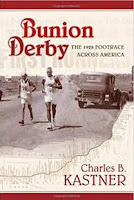August
7th is National Lighthouse Day. When I learned that, of course I had
to find some books!
The
Golden Age of American Lighthouses: a Nostalgic Look at the U.S.
Lights from 1850 - 1939 by Tim Harrison and Roy Jones is a
collection of photos of lighthouses, lighthouse keepers, lightships
and so on. It was a good read, but seemed to pretty much ignore the
west coast (with a few exceptions).
Many
lighthouse keepers were women. The men would go off to war, or off
to search for gold, some died and the wives took over their duties.
Mind the Light, Katie: the History of Thirty-Three Female
Lighthouse Keepers, by Mary Louise Clifford and J. Candace
Clifford contains short biographies and photos of some of them.
Nicely done, but still not much on the west coast.
While
Lighthouses of Washington: a Guidebook and Keepsake, by Bruce
Roberts and Ray Jones did cover Washington lighthouses, it really is
more of a tourist guide, with just a little history. Still the
pictures were good, and it was nice to learn the status of the
lighthouse today. Some are gone, many are tourist destinations, some
you can see just from a boat, or across the water.
A
book from the series I like so much Images of America did
offer more about Washington lighthouses, but just those on the outer
coast. As usual with this series, the pictures are wonderful and
with excellent captions. Lighthouses and Lifesaving on
Washington's Outer Coast, by William S. Hanable is worth a look.
It
seems there were always animals at Lighthouses (more than I would
have guessed). Read all about them in The Lightkeeper's Menagerie:
Stories of Animals at Lighthouses, by Elinor De Wire. From dogs
to cats, horses and mules, to livestock (many became pets), to the
local wildlife and even a few sea monsters, this was a great read.
Some saved lives (a bark could carry further on a stormy night than
the foghorn), some provided eggs, some hauled coal from boats to the
lighthouse, some just gave comfort, but most were welcome. A very
nice read.
I've
seen some of the old Fresnel lenses in museums and they are
beautiful. Learn all about them, and their inventor in A Short
Bright Flash: Augustin Fresnel and the Birth of the Modern
Lighthouse, by Theresa Lighthouse. They greatly improved the
distance a light could be seen, those on ships loved them, and yet,
the U.S. was reluctant to make the change (very frustrating).
Lighthouses went dark (and were destroyed) during times of war. A
lighthouse along the west coast of Canada was attacked during WWII,
but the German subs were chased off. By the Nootka Indians in canoes!
Here's
one for the bakers and creative types: Making Great Gingerbread
Houses: Delicious Designs From Cabins to Castles, From Lighthouses to
Treehouses, by Aaron Morgan and Paige Gilchrist. It was fun
looking at the pictures of all the projects, and the lighthouse
gingerbread creations are delightful.
There
will be more books on Lighthouses, I'm sure, but this is enough for
now. And, don't forget The Light on the Island from the
September 9, 2014 post. :-)
Reading
Hermit With Dog



















